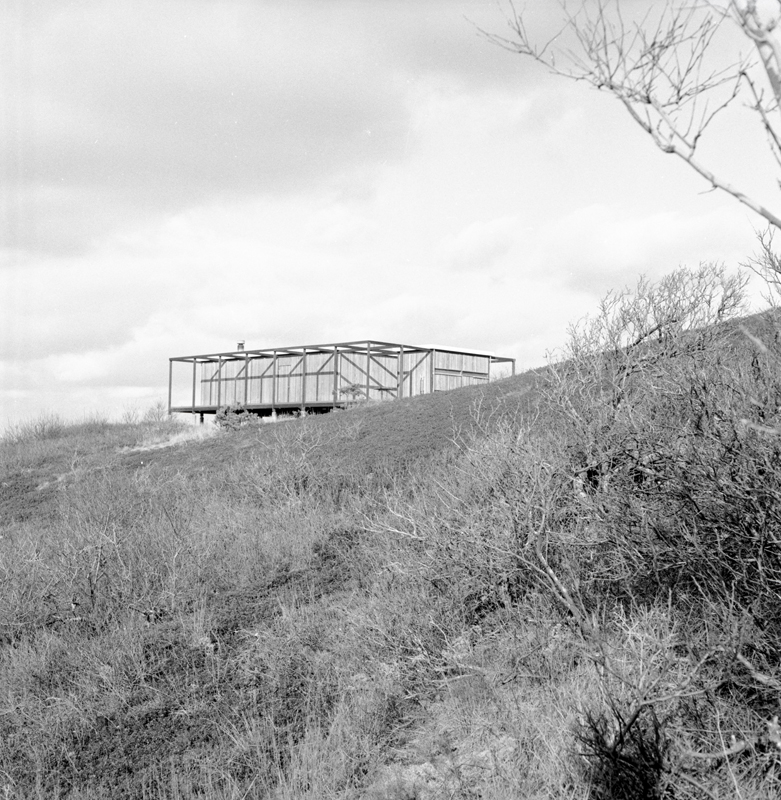Cape Cod Modern: Midcentury Architecture and Community on the Outer Cape
by Peter McMahon and Christine Cipriani
Winner of the 2015 Historic New England Book Prize
In the summer of 1937, Walter Gropius, founder of the Bauhaus and a professor at Harvard’s new Graduate School of Design, rented a house on Planting Island, near the base of Cape Cod. There, he and his wife, Ise, hosted a festive reunion of Bauhaus masters and students who had recently emigrated from Europe: Marcel Breuer, Herbert Bayer, László Moholy-Nagy, Xanti Schawinsky, and others. Together they feasted, swam, and planned their futures on a new continent, all sensing they were on the cusp of a momentous new phase in their lives. Yet even as they moved on, the group never lost its connection to the Cape Cod coast. Several members returned, when they had the means, to travel farther up the peninsula, rent cabins, buy land, and design their ideal summer homes. Thus began a chapter in the history of modern architecture that has never been told — until now. The flow of talent onto the Outer Cape continued and, within a few years, the area was a hotbed of intellectual currents from New York, Boston, Cambridge, and the country’s top schools of architecture and design. Avant-garde homes began to appear in the woods and on the dunes; by the 1970s, there were about 100 modern houses of interest here.
In this story, we meet, among others, the Boston Brahmins Jack Phillips and Nathaniel Saltonstall; the self-taught architect, carpenter, and painter Jack Hall; the Finn Olav Hammarström, who had worked for Alvar Aalto; and the prolific Charlie Zehnder, who brought the lessons of both Frank Lloyd Wright and Brutalism to the Cape. Initially, these designers had no clients; they built for themselves and their families, or for friends sympathetic to their ideals. Their homes were laboratories, places to work through ideas without spending much money. The result of this ferment is a body of work unlike any other, a regional modernism fusing the building traditions of Cape Cod fishing towns with Bauhaus concepts and postwar experimentation.
Advance Praise
"A beautifully written book with a tremendous sense of time and place."
— John Pawson, John Pawson Architects Ltd, London
"Painstakingly researched and beautifully written. . . . This is an extraordinarily exhaustive study not only of a rich trove of modern vacation homes built on the Outer Cape between 1938 and 1977, but also of a peculiarly hybrid culture that, partly European and partly American in origin, gave rise to a fertile intellectual, artistic, and political milieu, which was as much about experimental modes of living and radical thought as it was about a responsive and progressive architectural culture."
— From the foreword by Kenneth Frampton, Ware Professor of Architecture, Columbia University
"Rigorously researched and meticulously documented, Cape Cod Modern narrates an extraordinary era of architectural experiments in spatial organizations and materials on the Outer Cape. These houses are not only examples of an alternate legacy of the 'masters' of modern architecture. They are diagrams of a very particular worldview and recommendations for a specific way of living — progressive and enlightened, with art at its center."
— K. Michael Hays, Eliot Noyes Professor of Architectural Theory, Harvard University
"One of the missing links in East Coast modernism has been beautifully uncovered and brought to light by Peter McMahon and Christine Cipriani. There's a quiet lyricism to these diminutive shelters — some no larger than a squatter's shack — that sit amid the scrubby pines and dunes of outer Cape Cod and tell a story of both self-discovery and the longing for a deeper immersion in nature. Beyond a mere documentation of forgotten architecture, Cape Cod Modern is a first-rate chronicle of a special place and period in American cultural history."
— Alastair Gordon, author, Weekend Utopia: Modern Living in the Hamptons, and co-publisher, Fire Island Modernist: Horace Gifford and the Architecture of Seduction
"Fascinating — an elegantly written, well researched, highly readable account of the creation and flowering of a world of social and intellectual exchange, its characters, influences, and traditions, and the refined, austere, and delightful houses that are its legacy."
— George McNeely, Vice President for Strategic and International Affairs, World Monuments Fund
Read an excerpt in the Boston Globe
Read reviews
BUY THE BOOK
Metropolis Books / indiebound / William Stout Architectural Books / Barnes & Noble / Amazon


